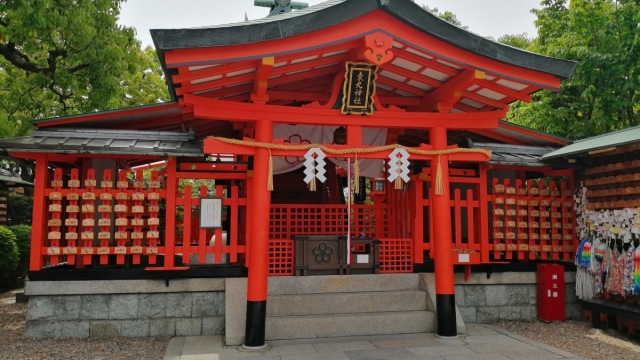
In the heart of Japan, where the whispers of ancient traditions blend seamlessly with the natural world, Shinto shrines stand as serene embodiments of spirituality and harmony. These sacred spaces are not just places of worship but also reflections of a culture deeply intertwined with nature and the cycles of life. As one wanders through the verdant forests and manicured gardens surrounding these shrines, a sense of peace envelops the soul, inviting visitors to pause and reflect on their own existence.
Shinto shrines, with their distinct architectural styles and enchanting torii gates, are gateways to a profound connection with the divine. They invite not only the faithful but also curious travelers to explore the rituals and customs that have been preserved for centuries. Each shrine carries its own unique spirit, often dedicated to kami, or spirits, that inhabit the natural world. As we discover the tranquility and beauty of these places, we also uncover the history and philosophies that continue to resonate in contemporary Japan, revealing a deep respect for nature and the cycles of life that define our collective human experience.
Read More
The Essence of Shinto Beliefs
Shinto, the indigenous spirituality of Japan, is deeply intertwined with the natural world and emphasizes the worship of kami, which are spirits associated with natural elements, ancestors, and revered figures. This belief system fosters a profound respect for nature, encouraging followers to recognize the sacredness of the environment surrounding them. Shrines, as the physical manifestations of Shinto beliefs, serve as spaces where individuals can connect with these spiritual entities.
The core of Shinto philosophy revolves around purity and rituals. Followers engage in various practices to maintain a sense of cleanliness, both physically and spiritually, as it is believed that impurities can disrupt one’s connection with the kami. Rituals performed at Shinto shrines, such as purification through water, offerings, and prayers, symbolize an individual’s devotion while seeking tranquility and harmony in life. These sacred spaces are precincts of peace where the community gathers to honor tradition and the divine.
At its heart, Shinto promotes a sense of continuity between the past and the present. Ancestors are celebrated and remembered, reflecting a strong familial bond that transcends generations. This reverence for lineage creates a cycle of respect and gratitude, allowing individuals to feel rooted in their heritage. Through the experience of visiting shrines, one can appreciate the serenity that comes with understanding their place within the broader tapestry of life and spirituality, making Shinto shrines vital to cultural identity and personal reflection.
Architectural Beauty of Shrines
The architectural beauty of Shinto shrines lies in their harmonious integration with nature. Each shrine is typically constructed using natural materials such as wood, stone, and thatch, allowing them to blend seamlessly into their surroundings. The simplicity of their design reflects a deep reverence for the natural world, embodying the Shinto belief that kami, or spirits, reside in all aspects of nature. This connection is most evident in the placement of shrines, often situated near mountains, rivers, or ancient trees, creating an atmosphere of tranquility and spiritual reflection.
Key architectural features of Shinto shrines include the torii gate, which serves as a symbolic entrance marking the transition from the profane to the sacred. These gates, often painted in a striking vermilion color, draw visitors in, inviting them to pause and reflect before entering the sacred space. The main hall, or honden, varies in design but generally features raised floors, thatched roofs, and intricate woodwork that showcase the skill of the artisans. Such thoughtful design elements contribute to the serene atmosphere that envelops visitors as they walk through the shrine grounds.
Additionally, Shinto shrines often incorporate elements that enhance their beauty through seasonal changes. Cherry blossoms in spring and vibrant maple leaves in autumn provide stunning backdrops that change throughout the year, evoking a sense of the ephemeral nature of life. This natural beauty is complemented by carefully maintained gardens and water features, which not only serve aesthetic purposes but also symbolize purity and renewal. Together, these architectural and natural elements create an environment that encourages contemplation and reverence, truly embodying the serenity of Shinto shrines.
Rituals and Practices
Shinto shrines are the heart of various rituals and practices that embody the essence of Japanese spirituality. One of the most significant rites is the kamidana, or household shrine, where families honor their ancestors and the kami, the spirits that inhabit the world around them. It is a space for daily offerings, including rice, salt, and water, symbolizing respect and gratitude. Individuals often visit shrines to pray for good fortune, health, and harmony, participating in both personal and communal rituals that enrich their spiritual lives.
Another prominent practice at Shinto shrines is the purification ritual known as temizu. Before entering a shrine, visitors cleanse their hands and mouths at a water basin, known as a chozuya or temizuya. This act of purification is essential as it prepares the individual spiritually, fostering a sense of mindfulness and respect. Additionally, the act of clapping their hands and bowing while making offerings is a common practice, creating a connection between the worshiper and the kami, reinforcing the bond between the physical and spiritual worlds.
Throughout the year, Shinto shrines also host various festivals, known as matsuri, which celebrate seasonal changes, agricultural practices, and community spirit. These festivals often feature processions, traditional music, dancing, and food, inviting the community to come together in celebration and gratitude. Each shrine may have its unique festivals, deeply rooted in local tradition, that contribute to a vibrant tapestry of cultural and spiritual life in Japan, ensuring the continuity of these cherished customs through generations.
Environmental Harmony in Shinto
Shinto shrines embody a profound respect for nature, reflecting the belief that the divine resides within the natural world. This spiritual connection is evident in the careful placement of shrines, often nestled within lush forests, atop mountains, or alongside rivers. The design and architecture of these shrines harmonize with their surroundings, emphasizing the beauty of the environment. Natural materials like wood and stone are predominant, further reinforcing the bond between the sacred and the earthly.
Visitors to Shinto shrines frequently engage with their environment, participating in rituals that honor the natural elements. Offerings of food, sake, and other items are made not only to the kami, or spirits, but also as a gesture of gratitude towards nature. This practice fosters a sense of stewardship among the community, encouraging a sustainable way of living that prioritizes environmental preservation. The serene atmosphere of the shrines serves as a reminder of the need to protect and cherish the natural world.
As the world faces numerous environmental challenges, the principles of Shinto highlight a path toward ecological harmony. By embracing the interconnectedness of all living things, Shinto shrines inspire individuals to consider their impact on the environment. The teachings of Shinto promote a respectful coexistence with nature, encouraging a collective effort to safeguard the beauty and integrity of our planet for future generations.



